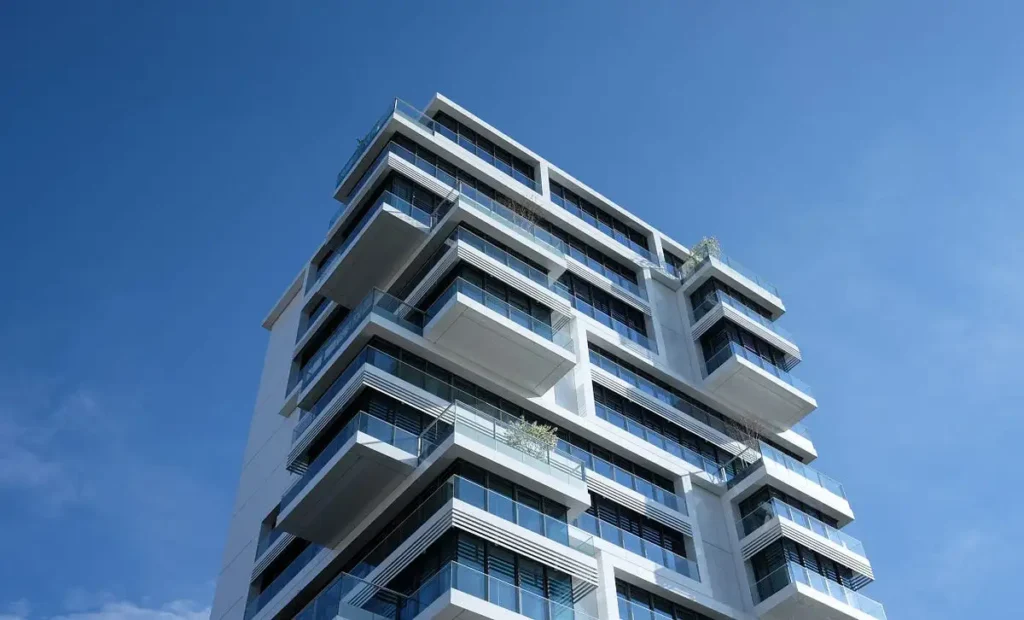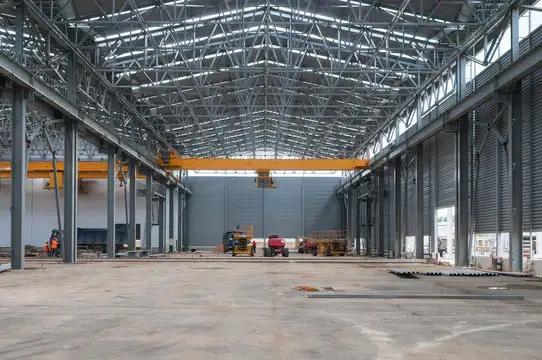Commercial buildings function exclusively for commercial business activities. Professional services find space in commercial buildings while enabling industrial production, retail stores, and other business facilities. The buildings produce money through either rental payments or capital appreciation. Commercial real estate as an asset class comprises multiple properties suitable for business operations. Businesses, investors, and tenants gain success by knowing various commercial building types when they need to select appropriate operating spaces.
The following piece discusses eight prominent types of commercial structures, followed by specific descriptions and relevant examples within each group. Knowledge about commercial buildings enables you to select optimal real estate options for rental, purchase, and investment purposes.
What is a Commercial Building?

The primary function of a commercial building is its use for business operations. These buildings house multiple business operations, such as offices and restaurants, retail stores, and warehouses. Commercial buildings differ from residential properties because apartment complexes count as residential income-generating properties but do not practice commerce. Social buildings work directly with commercial practices instead of residential properties because they participate in business operations.
Types of Commercial Buildings
A wide range of commercial buildings exists for distinct commercial functions. The most typical types of establishments can be found below
1. Office Buildings
Building offices represents one of the most frequent forms of commercial property. Businesses use these properties as their operational bases for conducting ongoing activities. An office building can exist anywhere between one-story structures and skyscraper-sized buildings. Business districts and urban centers are prime locations for putting these buildings.
Key Features:
- Can be single-story or high-rise buildings.
- Used for businesses such as law firms, marketing agencies, or tech companies.
- It may house multiple businesses or just one tenant.
Professional organizations acquire office buildings through leases when they require professional operational settings. Office buildings have basic functions that consist of meeting spaces and reception areas, with potential additions of dining areas and cafeterias.
Commercial Building Example:
Corporate office headquarters: Such buildings serve both corporate and corporate-related operations across one or more professional organizations while situated within an area primarily designed for business activities.
2. Restaurant Buildings
Restaurants establish themselves as one of the major commercial building types. Food service businesses use these structures because they have been designed for their needs. Commercial restaurants can employ either newly constructed buildings or existing structures when developing space to suit their requirements.
Key Features:
- Includes kitchens, dining spaces, and sometimes outdoor patios.
- Proper ventilation systems and plumbing are needed to meet health codes.
- Located in busy areas to attract customers.
Multiple restaurant facilities are leased to their owner-operators throughout the market. These structures are modified based on the restaurant brand or accommodate several businesses.
Commercial Building Example:
Standalone restaurant building: The establishment features a personalized kitchen and dining area for its fast-casual dining concept.
3. Retail Buildings
Buildings designed for retail purposes provide facilities that enable businesses to offer direct product sales to their customers. These facilities exist independently as individual stores, within shopping centers, and within the structure of major shopping malls. Nearly all retail facilities exist between small boutique shops and massive big-box store establishments.
Key Features:
- Designed with storefronts that attract walk-in customers.
- Can be single-tenant or multi-tenant (e.g., strip malls).
- Often located in high-traffic areas like city centers or suburban areas.
Commercial establishments specifically seek retail spaces, which clothing stores, electronics retailers, and grocery stores occupy. Large windows with display areas are among the features found in these buildings to enable product display and attract foot traffic.
Commercial Building Example:
- Strip malls are retail facilities that house multiple business establishments, including food stores, eateries, and fashion stores.
4. Hotels
Hotels are commercial establishments that provide short-term housing solutions for travelers. In terms of size, offerings, and facility range, hotels range from small motels to luxurious resorts. Extra hotel facilities usually consist of food establishments, workout facilities, and space for special events.
Key Features:
- Guest rooms or suites for short-term accommodation.
- Amenities like room service, concierge, or spa services.
- Typically located in tourist or business districts.
Hotels earn income from providing services and rapidly exchanging guests, so they exist as commercial properties, although some consider them residential due to their lodging facilities.
Commercial Building Example:
Luxury hotel: A high-rise hotel with rooms, restaurants, and business conference facilities.
5. Warehouses

Warehouses are commercial buildings that serve as material storage facilities. They play essential roles for companies in the manufacturing, retail, and logistics industries. Despite their presence in major cities and country locations, warehouses usually operate near transportation facilities.
Key Features:
- Large, open floor plans designed for storage.
- Often include loading docks for trucks and forklifts for moving goods.
- Climate control may be required for certain goods (e.g., food or electronics).
A warehouse can serve as a short-term storage space or as an institution for extended inventory management. Companies requiring storage space for items waiting to be distributed depend on warehouses as an essential facility.
Commercial Building Example:
Distribution center: A warehouse used by e-commerce companies to store products before shipping them to customers.
6. Industrial Buildings
Industrial structures encompass heavy-duty compounds, operational manufacturing facilities, and production facilities. Industrial facilities offer combined accommodation for factories, processing facilities, and workshops that support automobile manufacturing, as well as the construction of new buildings and chemical manufacturing operations.
Key Features:
- Specialized facilities for manufacturing or processing.
- May include heavy machinery, production lines, and hazardous materials.
- Typically located away from residential areas due to noise or pollution concerns.
Because of their unique facility specifications, industrial buildings acquire standard components, including reinforced floors and safety features, with their high ceilings.
Commercial Building Example:
Manufacturing plant: The facility assembles and produces automobiles and electronic products.
7. Healthcare Buildings
Medical service facilities, such as healthcare buildings, constitute part of the commercial property classification. Three basic healthcare facilities include hospitals, clinics, and doctor offices. Buildings that serve as healthcare facilities need to fulfill rigorous performance criteria to ensure the safety of their visitors.
Key Features:
- Designed with patient care in mind, featuring exam rooms, surgery areas, and waiting rooms.
- Must comply with health codes and safety regulations.
- Often located near residential areas or in specialized healthcare zones.
This sector’s buildings serve major hospital complexes and smaller medical facilities with only one occupant.
Commercial Building Example:
Medical office building: A small building housing doctors’ offices, physical therapy centers, or medical labs.
8. Multi-use Buildings
Multiple business sectors reside within a single architectural framework of commercial properties. The buildings house several business operations under one unified structure. The financial stability of developers building such structures stems from using multiple commercial spaces within one construction and adjustable uses between tenants.
Key Features:
- Multiple types of tenants within one building (e.g., apartments, offices, restaurants).
- Designed to serve a variety of functions, often within urban areas.
- Can house a mix of residential and commercial spaces, as long as at least 51% of the tenants are businesses.
The multi-functionality of buildings attracts builders because they produce multiple revenue streams between offices in upper levels, restaurants at ground level, and apartments above. The stability of mixed-use developments depends on different people filling in empty spaces left by departing tenants on upper floors.
Commercial Building Example:
Mixed-use urban development: A building with offices on upper floors, a restaurant on the ground floor, and apartments on the top floors.
Why is it important for commercial buildings?
Every real estate or business organization must understand all alternative commercial building types. Your business success depends on making the correct decision between company space leasing and investing in opportunities with businesses.
Selecting suitable commercial buildings is a critical step because business owners seek operational effectiveness. Real estate investors can perform property selection only when they identify buildings that match their investment criteria. Through natural examination of specifications, zoning regulations, and maintenance guidelines, business owners gain better insight into their decisions.
Conclusion
Commercial buildings come in various types to fulfill the demands of diverse business purposes. Stone brook and Qi conducted a study on Decision-making for commercial spaces, requiring knowledge of commercial building types for effective selection between retail spaces, office facilities, restaurants, and industrial facilities. Commercial facilities offer different benefits by establishing business centers housing office facilities, warehouses, and healthcare institutions.
Specific knowledge of commercial characteristics enables you to select the appropriate combination of business facilities required for your operations. Your knowledge improves your ability to boost commercial performance by leasing or investing in diverse commercial buildings.
FAQS
Q1. What are the main types of commercial property?
The primary types of commercial properties are office buildings, retail space, industrial buildings, healthcare buildings, and multi-purpose buildings. Each fulfills different business requirements, such as workspace, retail activities, or manufacturing.
Q2. What are the various commercial construction types?
Commercial construction involves office buildings, shopping complexes, warehouses, hotels, and healthcare facilities. Each has unique construction methods to fulfill different business requirements and rules.
Q3. What are the commercial building property types?
Commercial buildings encompass office buildings, shops, industrial properties, hotels, restaurants, and healthcare facilities. They carry out various activities, ranging from accommodating businesses to offering services to clients.
Q4. How many industrial buildings does the US have?
There are more than 300,000 industrial buildings in the United States, and the number is increasing due to heightened demand for factories, warehouses, and storage premises.


